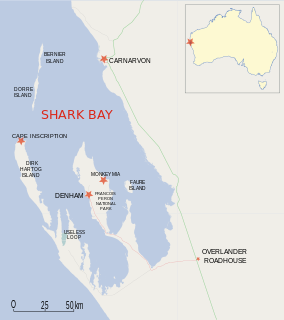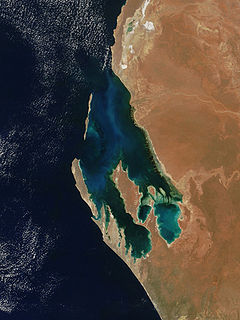
Christinus is a genus of Gekkonidae geckos found in southern regions of Australia. It contains species and subspecies that are regionally termed as marbled geckos. The contrasted patterns of these geckos, marbling, are found in a variety of reddish-brown, grey, silver, white, black and purplish hues. They are frequently found in old knotted trees and sometimes congregate in large numbers in established urban environments.

Oedura is a genus of medium to large geckos, lizards in the family Diplodactylidae. The genus is endemic to Australia. Species in the genus are referred to by the common name velvet geckos.

The southern pig-footed bandicoot – Chaeropus ecaudatus – was a small species of herbivorous marsupial in the genus Chaeropus, the pig-footed bandicoots.

Antaresia is a genus of pythons, nonvenomous snakes found in Australia. The genus is known by the common name Children's pythons, the name of the type species. Gray named it in honour of his mentor, John George Children, who was a curator of the zoological collection at the British Museum around that time. It contains the smallest members of the Pythonidae. Currently, four species are recognized.

Tiger snakes are a highly venomous snake species found in the southern regions of Australia, including its coastal islands, such as Tasmania. These snakes are highly variable in their colour, often banded like those on a tiger, and forms in their regional occurrences. All populations are in the genus Notechis, and their diverse characters have been described in further subdivisions of this group; they are sometimes described as distinct species and/or subspecies.

Christinus marmoratus, also known as marbled gecko or marbled southern gecko, is a species of Gekkonidae (gecko) native to southern mainland of Australia, from Victoria to Western Australia. The species is well adapted to a variety of habitats, including city dwellings..

Stimson's python is a species of python, a snake in the family Pythonidae. The species is endemic to Australia. Stimson's pythons are sold and kept as pets in some Australian states.
Rankinia adelaidensis is a species of heath dragon, small agamid reptiles, occurring in southern regions of Australia.

Morelia spilota imbricata is a large snake found in southern regions of Western Australia and western South Australia. A member of the python family, it is commonly known as the South-West carpet python.

Strophurus is a genus of lizards in the family Diplodactylidae. All species of Strophurus are endemic to Australia, and are sometimes given the common names spiny-tailed geckos or striped geckos.
Christinus alexanderi, also known as Alexander's southern gecko or Alexander's marbled gecko, is a species of Gekkonidae geckos found in the Nullarbor Plain of Australia. It is one of the many species and subspecies regionally termed as marbled geckos.
Arnold G. Kluge is professor emeritus of zoology and curator emeritus of amphibians and reptiles at the University of Michigan, Museum of Zoology. Kluge authored over 140 journal articles. He served as past president of the Willi Hennig Society and as editor-in-chief of its journal Cladistics. He served at the University of Michigan from 1965 until his retirement in 2003.
Crenadactylus horni, the Central Uplands clawless gecko, is a species of gecko endemic to the central desert region of Australia.
The northern clawless gecko is a species of gecko endemic to Western Australia and Northern Territory in Australia.
Crenadactylus pilbarensis is a species of gecko found in the Pilbara region of Australia. They resemble other species of the genus Crenadactylus, tiny clawless Australian geckos found across a large area of the continent, but has persisted as an ancient lineage in a region of the northwest.
The Southwest Kimberley clawless gecko is a species of gecko endemic to Western Australia in Australia.
The Cape Range clawless gecko is a species of gecko endemic to Western Australia in Australia.
















